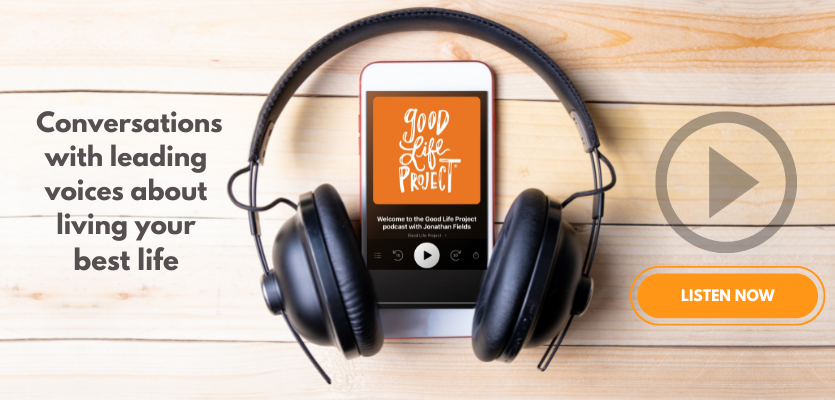It started on Instagram. Mandy Len Catron saw a friend’s post about a show at a local art gallery. It looked like fun; she was in. Another friend, who was more of a casual acquaintance and former student, suggested they go together. Cool, she replied. It was a date. Or something. You never really know these days.
They walked around the show for a bit, circling and wondering what was going on, more in friend than first-date mode. Afterward they found their way to a nearby bar and
starting chatting about love. Len Catron had spent years studying the topic of love, both as a writer and as an academic, so this wasn’t that unusual.
Her friend offered a theory; he believed that, given a few basic commonalities, pretty much anyone could fall in love with anyone. He had no idea what those commonalities might be or how to make it happen. Mandy wasn’t sold on the idea. Then she remembered something. In the course of her research, she had come across a study by Arthur and Elaine Aron, professors at the State University of New York at Stony Brook, that fascinated her.
It had become known as the 36 questions to fall in love study, because that’s kinda how it worked.
Psychology students were divided into pairs, a heterosexual male and female, previously unknown to each other. Students who disagreed on any strongly held beliefs before the pairing were not matched. One by one, they were brought into the lab and asked to sit across from each other. Over the next 45 minutes, they read and answered a series of 36 questions that became increasingly revealing and required deeper levels of self-disclosure, vulnerability, and trust.
At the end they sat quietly, staring into each other’s eyes for four minutes. Immediately after, Aron asked them more questions. The results were eye-opening. After just 45 minutes, 30 percent of the students rated the relationships they had just created as “closer than the closest relationships in their lives.” Many more stayed close afterward. And to cap things off, six months later one of the Aron pairs got hitched and invited the entire lab to the wedding!
But … how does it work?
It’s kinda wild to think that just asking a set of 36 questions could make two people fall in love. But it turns out that the architecture of the 36 questions process is really deliberate: the Arons structured the series of questions to mimic the natural deepening of relationships that happens as they become more intimate.
“One key pattern associated with the development of a close relationship among peers is sustained, escalating, reciprocal, personalistic self-disclosure … The core of the method we developed was to structure such self-disclosure between strangers.”
(Personality and Social Psychology Bulletin)
And while the Arons and their fellow researchers acknowledge that it’s not some instant love spell, the closeness and intimacy created by the questions is real.
“Are we producing real closeness? Yes and no. We think that the closeness produced in these studies is experienced as similar in many important ways to felt closeness in naturally occurring relationships that develop over time. On the other hand, it seems unlikely that the procedure produces loyalty, dependence, commitment, or other relationship aspects that might take longer to develop.”
(Personality and Social Psychology Bulletin)
As it turns out, that closeness happened for Len Catron too.
Back to our maybe-not-a-date-first-date.
Len Catron shared Aron’s experiment with her friend at the bar and mentioned how she’d always wanted to try it. He said, “Let’s do it.”
“Now?”
“Now!” So they did. There, in the middle of a bar, they found the questions online and passed a phone back and forth answering the 36 questions. Everything vanished away as they moved deeper. Forty minutes turned into hours, as the crush of the bar enveloped them. By midnight, they had wrapped up the final questions. Still, they had one more step. They walked outside to a bridge near the bar and stood, gazing into each other’s eyes for four minutes. For Len Catron, that single moment was actually more vulnerable and powerful than the hours of questions that had come before. Or maybe it was because of the questions that came before. Shortly after, they began dating and fell in love.
Mandy shared this story in an essay in The New York Times entitled, “To Fall in Love with Anyone, Do This.” The article became a massive, viral sensation. Millions of readers, it seemed, were looking for a fast track to romantic love. They thought they’d found the elixir in Aron’s 36 questions.
I saw something else.
Diving into his work, I realized romance was not the real subject; intimacy and friendship were. It was more about companionate love than romantic love. I began to wonder what might happen if I tweaked his approach and used it as a tool to rapidly create deep friendships among strangers. To increase the likelihood of people falling in “friend love.” Lucky for me, I had the perfect lab to run that experiment.
For a number of years, our Good Life Project® team has run an accelerated personal growth experience called the Good Life Immersion. It starts out with a long retreat, often in a foreign country. We often take over an entire boutique retreat center, so that we get an immersive, 24-7 experience. We learn together, play together, eat together, and sleep together — well, not like that, but you get the point!
People come from around the world. Very few, if any, know each other before we begin. We do a lot of growing during our time together, but from the standpoint of the team, our biggest goal is to create a container that is safe and deliver a series of experiences that cultivate deep trust, openness, and lifelong friendship. People may come for the knowledge and the experience, but it’s the depth of the relationships that will sustain them for life. We’ve been pretty successful at this, but having been exposed to Aron’s work shortly before the Spring 2015 program was set to begin in Costa Rica, I saw an opportunity.
I called the faculty together and shared the research, then offered my idea. I should note, I offer a lot of ideas, not all of them good. So I count on my team to keep me in check. What if we modified the questions to keep the progressive self-disclosure and vulnerability, I said, but make them more applicable to our group? Then, what if, every night before sending people off to hang out or go to bed, we gave them a set of questions to answer in small groups. Each night, the question would require them to dig deeper and share more. The team lit up. They loved it. So we did it.
The outcome blew all of us away.
That group was our most diverse ever—ethnically, culturally, spiritually, geographically, and sexually—so there was a lot of opportunity for misunderstanding and division. Yet by the time the retreat ended, it was like one beautiful family.
Shields lowered, facades dropped, hearts and minds opened. Deep, emotional conversations took people into the wee hours of the night. Many, many tears were shed and a metric ton of laughter and revelation forged profound ties in a remarkably short period of time.
Was it all about the questions? Of course not. There was so much more going on. But from where I sit, it made a very real difference. It’s not an intimacy cure-all. It’s not a magic love bullet or spoken-word aphrodisiac (said in the voice of Barry White). But it is a powerful tool that encourages people to get real and go deep — fast.
Cool thing is, you can try it, too.
Daily Exploration:
If you’re new to this, here’s what’s going on. In my book How to Live a Good Life, I invite you to join us in daily explorations to see what filling your Good Life Buckets looks like. These explorations are challenges that also provide specific ways to learn more about yourself and become more intentional about the way you live. And this one is all about deepening your relationships.
I’ve shared all 36 of Aron’s original questions, in the order to be asked and answered, below. Don’t look at them yet.
Now, think of someone you might like to begin a real friendship or even a potential romance with, or a relationship you’d like to deepen. Tell this person you have a fun experiment to do where you’ll both get to ask and answer a bunch of questions, from fun and silly to deep and provocative. Invite them to meet you somewhere you’ll both be comfortable. Remember, Aron’s original study happened in a lab, but Len Catron’s real-life experiment happened in a bar and yielded equally powerful results.
When you meet, open the book to the questions below (remember, do not read them before). Ask the first question, let your partner answer, then respond with your answer to the same question. When you’re done, move on to the next until you’re done, alternating who answers first with each question. The early ones will be pretty superficial, some even just fun, and then they’ll get deeper. At the end, you’ll sit quietly and look each other in the eyes for four minutes; then, if you want, you can share what the experience was like. Find a time when you can both carve out an uninterrupted hour. Then do it. Afterward, spend a few more minutes journaling about your thoughts.

Here, now, are Aron’s 36 questions as they appeared in the original research in three sets:
Set I
- Given the choice of anyone in the world, whom would you want as a dinner guest?
- Would you like to be famous? In what way?
- Before making a telephone call, do you ever rehearse what you are going to say? Why?
- What would constitute a “perfect” day for you?
- When did you last sing to yourself? To someone else?
- If you were able to live to the age of 90 and retain either the mind or body of a 30-year-old for the last 60 years of your life, which would you want?
- Do you have a secret hunch about how you will die?
- Name three things you and your partner appear to have in common.
- For what in your life do you feel most grateful?
- If you could change anything about the way you were raised, what would it be?
- Take four minutes and tell your partner your life story in as much detail as possible.
- If you could wake up tomorrow having gained any one quality or ability, what would it be?
Set II
- If a crystal ball could tell you the truth about yourself, your life, the future or anything else, what would you want to know?
- Is there something that you’ve dreamed of doing for a long time? Why haven’t you done it?
- What is the greatest accomplishment of your life?
- What do you value most in a friendship?
- What is your most treasured memory?
- What is your most terrible memory?
- If you knew that in one year you would die suddenly, would you change anything about the way you are now living? Why?
- What does friendship mean to you?
- What roles do love and affection play in your life?
- Alternate sharing something you consider a positive characteristic of your partner. Share a total of five items.
- How close and warm is your family? Do you feel your childhood was happier than most other people’s?
- How do you feel about your relationship with your mother?
Set III
- Make three true “we” statements each. For instance, “We are both in this room feeling … “
- Complete this sentence: “I wish I had someone with whom I could share … “
- If you were going to become a close friend with your partner, please share what would be important for him or her to know.
- Tell your partner what you like about them; be very honest this time, saying things that you might not say to someone you’ve just met.
- Share with your partner an embarrassing moment in your life.
- When did you last cry in front of another person? By yourself?
- Tell your partner something that you like about them already.
- What, if anything, is too serious to be joked about?
- If you were to die this evening with no opportunity to communicate with anyone, what would you most regret not having told someone? Why haven’t you told them yet?
- Your house, containing everything you own, catches fire. After saving your loved ones and pets, you have time to safely make a final dash to save any one item. What would it be? Why?
- Of all the people in your family, whose death would you find most disturbing? Why?
- Share a personal problem and ask your partner’s advice on how he or she might handle it. Also, ask your partner to reflect back to you how you seem to be feeling about the problem you have chosen.
Aron, Arthur, PSPB (Vol. 23 No. 4), pp363-377, ©1997 Society for Personality and Social Psychology, Inc.
This is, of course, just the beginning.
Remember, these questions are not an end-all be-all for love, friendship, and community –– that takes more than the closeness doing this exercise can engender. But it does make for a wonderful way to deepen an existing relationship, or to get a new relationship started with a focus and intimacy that really sets you up to go deep. So give it a try –– and know that we’re always here to cheer you on and help out with more resources on connection.
(This article is an updated excerpt from How to Live a Good Life by Jonathan Fields, Hay House, 2016)




